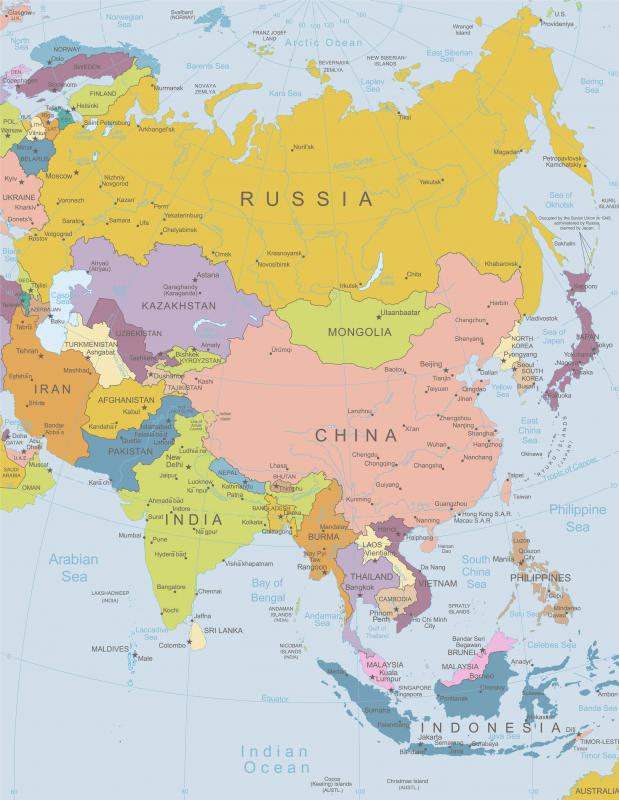At AllThingsNature, we're committed to delivering accurate, trustworthy information. Our expert-authored content is rigorously fact-checked and sourced from credible authorities. Discover how we uphold the highest standards in providing you with reliable knowledge.
What is the Przewalski’s Horse?
The Przewalski’s horse, also called the Asian or Mongolian wild horse, is a truly wild species of horse that has never been regularly domesticated. It is classified as a relative of the domesticated horse, differing in significant genetic ways. There are approximately 1500 Przewalski’s horses in the world today, with only 250 existing in the wild.
Compared to a typical horse, a Przewalski’s horse is short and thick-built, with a heavy coat. Most reach a height of no more than 4.2 feet (1.3 m.) They are tan or light brown in color and some show patterns of striping on their legs. Most have a white face or muzzle, and their mane is unusually stiff and upright. The average weight of an adult horse is about 440 to 750 pounds (200 to 340 kg.)

The behavior of the Przewalski’s horse is typical of that in most other wild or feral horse populations. A family group is comprised of a dominant stallion and mare, several other lower-ranking mares, and foals. Young stallions live in bachelor groups, mating only when they can manage to get past the head stallion. The gestation of the mares is about 1 year, and births of one foal are most common. They maintain a specific home range, although family group ranges can usually overlap without causing problems.
The Przewalski’s horse was first officially described in the 19th century, by General Nikolai Przhevalsky, a Russian naturalist who set out for Asia to follow rumors of the horses’ existence. Many specimens were captured and exhibited in zoos, but never domesticated. In the 20th century, population expansion, hunting, and habitat destruction spelled doom for the wild herds. By the late 1960s, the species was considered extinct in the wild by most authorities.
One of the best cases for keeping animals in captivity for breeding purposes can be attributed to the Przewalski’s horse. The animals that had been taken for exhibition purposes at the turn of the 20th century were organized into a breeding group after the demise of the wild population. Through considerable effort, the population has increased from 31 captive specimens to 1500. In several areas throughout their previous native ranges in Mongolia, herds have been reintroduced into the wild.
While zoos are rightfully critiqued in many ways, the success of the wild horse breeding programs cannot be ignored. Without the original captivity, the Przewalski’s horses would likely not only be extinct in the wild, but extinct permanently. Through correctly applied conservation methods and scientific work, similar tactics may be used in the future to save other species in severe peril. The thunder of horse hooves again on the broad plains of Mongolia is surely a sign of sincere success.
Frequently Asked Questions
What is unique about the Przewalski's horse compared to other wild horses?
The Przewalski's horse, native to the steppes of Central Asia, is the only truly wild horse species remaining in the world. Unlike other wild horses, which are feral descendants of domesticated horses, Przewalski's horses have never been successfully domesticated. They are genetically distinct, with 66 chromosomes compared to the 64 of domestic horses, according to genetic studies.
How did the Przewalski's horse come back from the brink of extinction?
Przewalski's horses were declared extinct in the wild in the 1960s. Conservation efforts, including captive breeding programs and reintroduction initiatives, have been crucial in their recovery. By the early 21st century, these efforts led to the successful reintroduction of several herds into their natural habitats in Mongolia, as reported by conservation organizations.
What is the current conservation status of the Przewalski's horse?
As of the latest assessments, the Przewalski's horse is classified as "Endangered" on the IUCN Red List. While their numbers have increased due to conservation efforts, they still face threats from habitat loss, potential inbreeding, and competition with livestock. Ongoing conservation measures are essential to ensure their survival, as emphasized by wildlife protection agencies.
What does the Przewalski's horse typically eat, and how does it survive in the wild?
Przewalski's horses are herbivores, grazing on a variety of grasses, plants, and shrubs found in their steppe habitat. They have adapted to survive in harsh environments with extreme temperatures and scarce water sources. Their diet is supplemented by minerals and salts they find in their natural habitat, which help maintain their health in the wild.
Can Przewalski's horses interbreed with domestic horses, and what are the implications?
Przewalski's horses can interbreed with domestic horses, producing fertile offspring due to their close genetic relationship. However, such hybridization can dilute the unique genetic makeup of Przewalski's horses. Conservationists are careful to maintain the genetic purity of the species to preserve their distinct characteristics and ensure the integrity of reintroduction programs.
What efforts are being made to ensure the long-term survival of the Przewalski's horse?
Conservationists are employing a multifaceted approach to ensure the survival of Przewalski's horses. This includes maintaining and managing genetic diversity within captive populations, protecting and restoring their natural habitats, and monitoring reintroduced populations. International collaboration among zoos, conservation organizations, and governments is key to these efforts, as is raising public awareness about the species' plight.
AS FEATURED ON:
AS FEATURED ON:











Discuss this Article
Post your comments